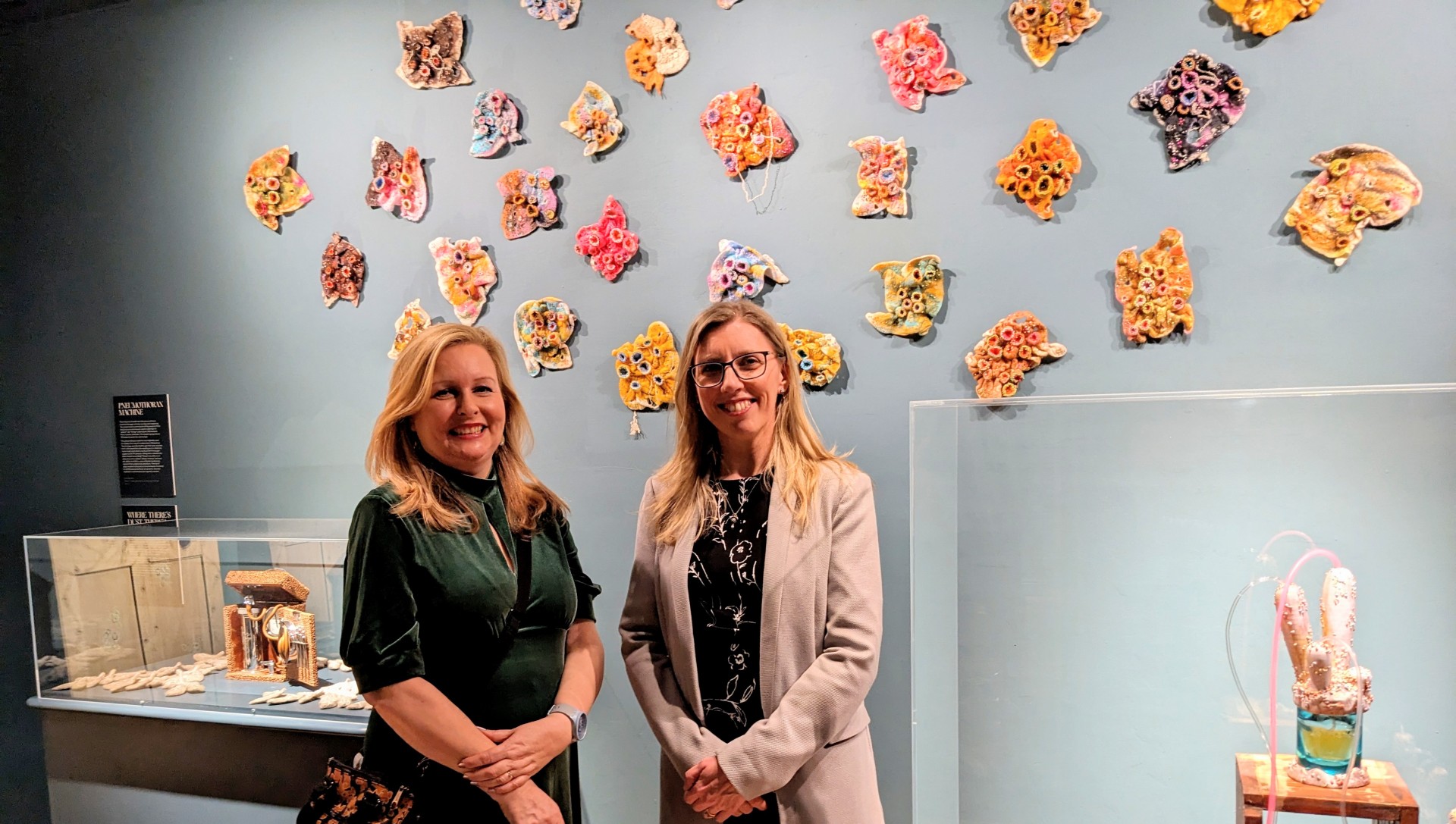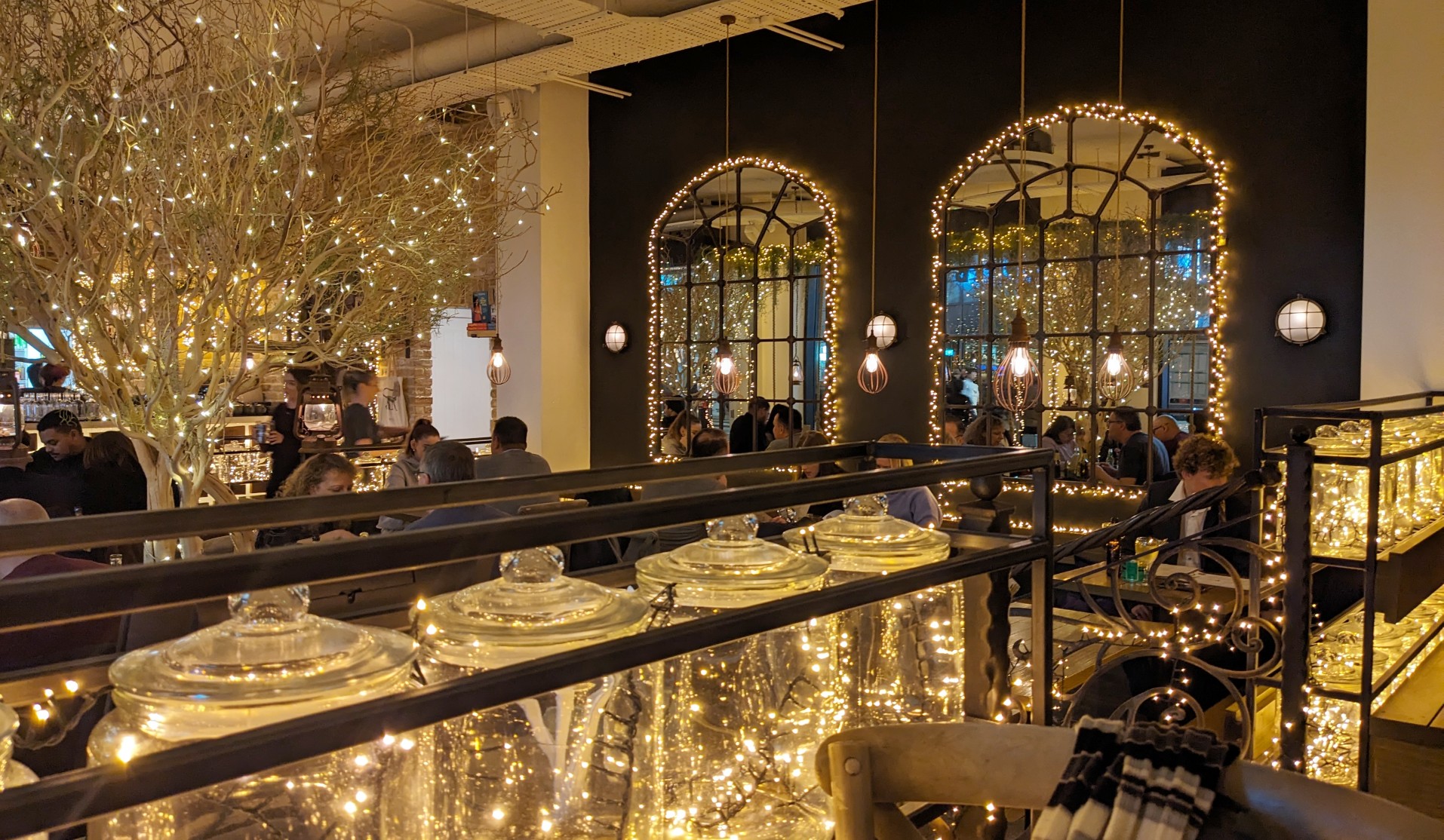Wednesday 4th November, one last day to enjoy a cultural activity before lockdown phase two. I was glad I chose to visit the exhibition ‘Natural Encounters’ at Leeds Art Gallery. Many of us have taken solace in nature and art during this unusual year, so it was good to meet them together.
The exhibition was partially curated before the start of the pandemic. This is clear in one of the galleries, which is very much focussed upon the Leeds collection, drawing themes from it. A video presentation explains how the works were chosen. Gallery users and local teenagers discuss the impact of various works with assistant curator Laura Claveria, giving insight into how exhibitions are constructed.
Most of the art in this first gallery comes from the Leeds Works on Paper collection. Many galleries focus on large scale works rendered in oil or acrylic. To do so is to miss work that is often exquisitely detailed and subtle in tone. This is evident in the section that focuses upon trees, brought together by a living olive tree in the centre of the artworks. There is a wealth of talent on display: Constable, Gainsborough, Turner, John Singer Sargent and John Nash are amongst the famous names on show.

My favourite was a selection of drawings by Paul Nash, illustrating how he grew trees as sculpture.
Sometimes, a themed exhibition enables you to see another side of an artist you are already familiar with. I associate John Tunnard with abstract modernist paintings, but the pieces here were clearly anatomically related to the fish and dragonflies they depict – and draw upon his interaction with the Cornish countryside.
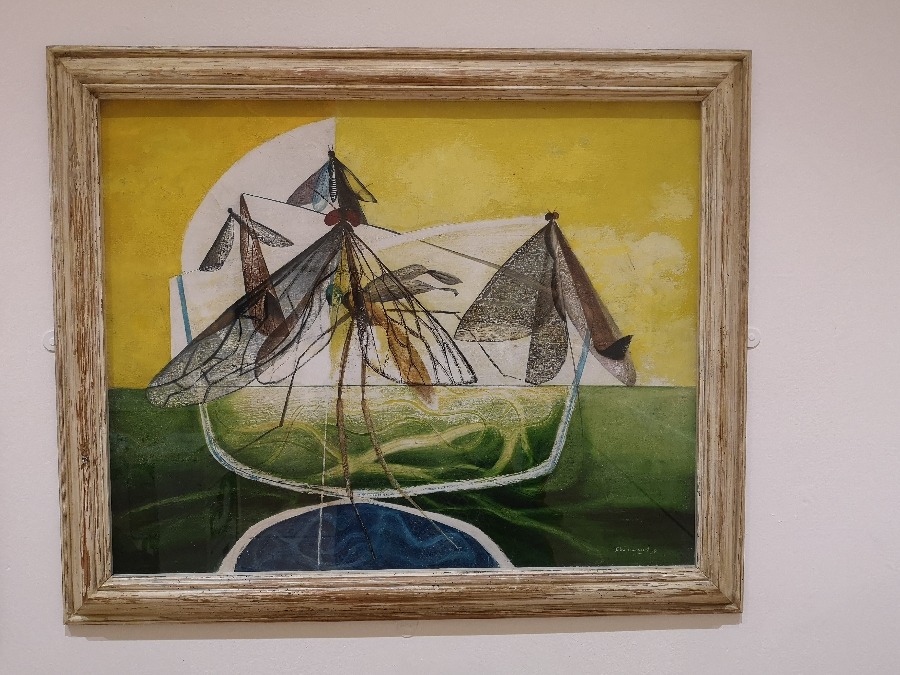
John Atkinson Grimshaw, arguably Leeds’ most famous artist, usually uses a prism of twilight or streetlights to display urban scenes. Here, his work is represented instead by trees and parks.
The second gallery was clearly constructed in the light of Covid and makes reference to the role of nature during the pandemic. Grimshaw’s Roundhay Park work is given added weight by the accompanying historical poster about the campaign to set up a public park. Grimshaw was commissioned to paint three scenes to persuade parliament to support the scheme. At one point, 50,000 people marched to call for public access. Tree Shadows on the Park Wall is a timeless image, and experiencing it brings relief that the campaign was successful, especially during Covid.
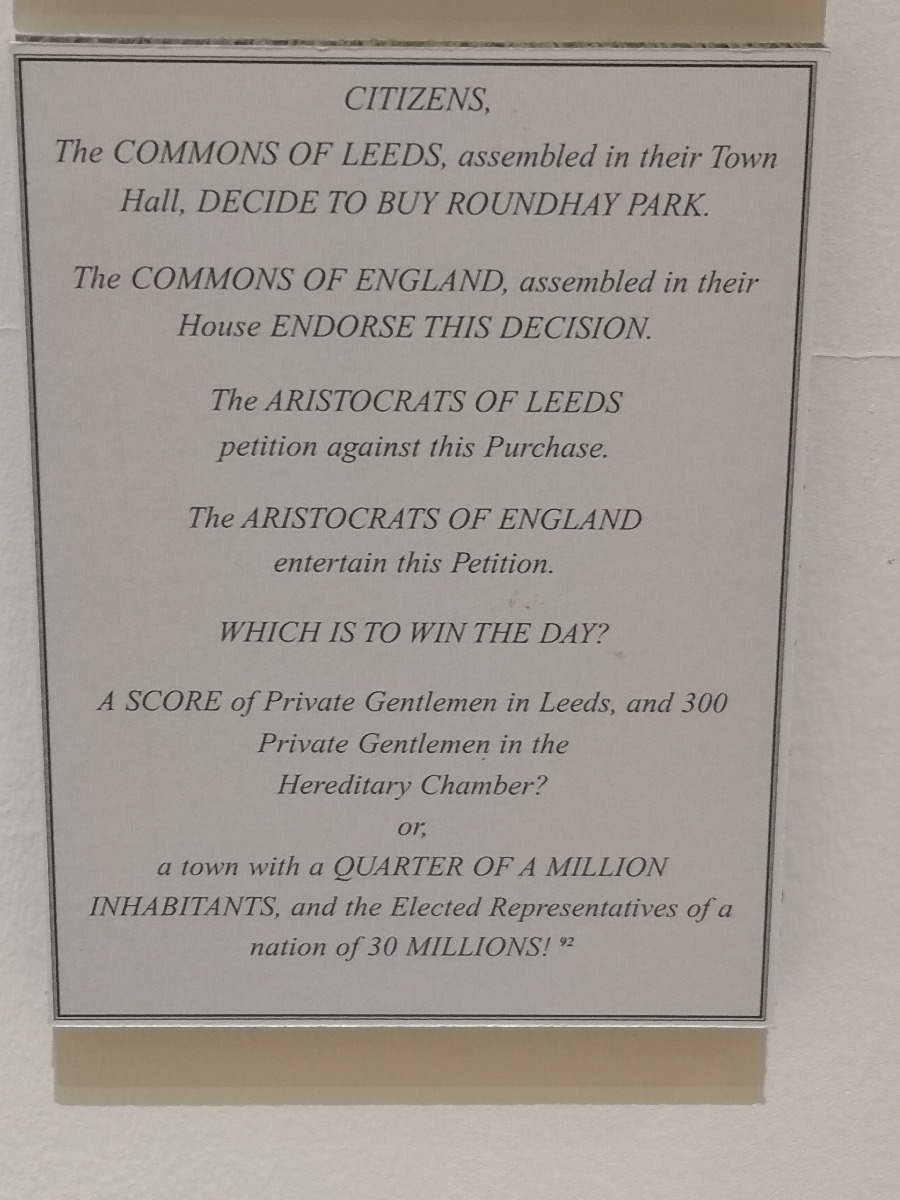
One of the themes of this part of the exhibition is nature as sanctuary. There is a plea for access to green spaces to enable good health. A good example of this in practice is Chris Dury’s Medicine Wheel. Over the space of a difficult year, he collected a natural item each day and used them to create an object calendar. The wheel is centrally positioned at the back of a gallery and the linked objects throw interesting shadows on the wall behind. There is a connectivity and uniqueness to every item found. The accompanying text comes from Chris’s Coronavirus Log. The fact that he found something natural to cherish every day of the year gives me hope as we move into a month of winter lockdown.
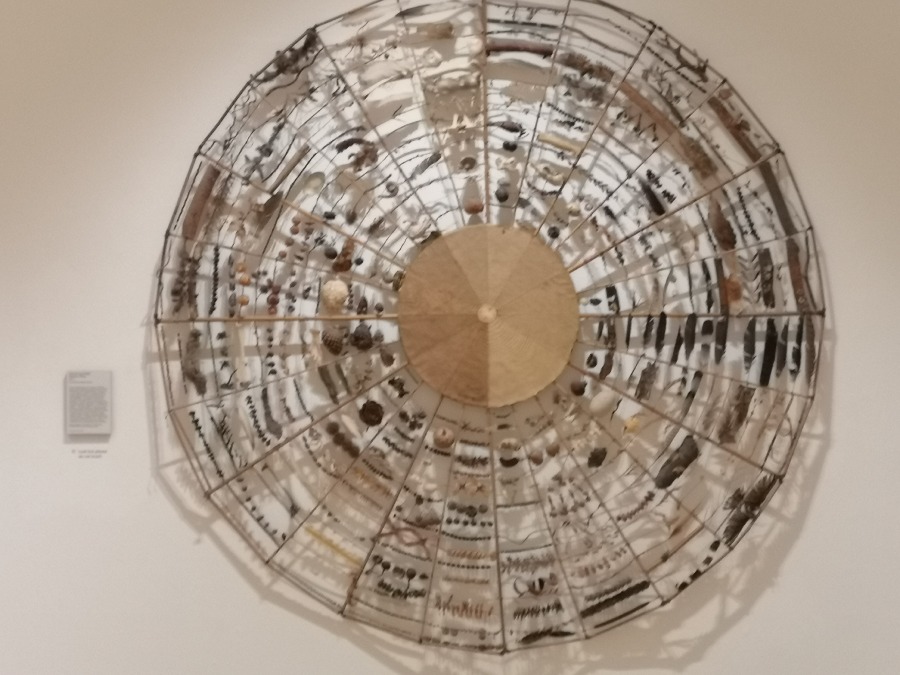
The link between nature and mental health is even more apparent in Sadé Mica’s It Teks Time.
The non-binary artist has positioned two chairs in the Malham countryside and uses this as a backdrop to replay conversations with an absent counsellor. They say of the artwork:
“Exploring nature centres and refreshes me in a way that only my counselling sessions did. It felt right to combine the two.”
Many of the artworks relate to Yorkshire. However, the perspective can be unusual. Mica’s work plays with issues of identity and belonging. International artists are represented with Swiss imagery of the Bronte moors from Annelies Štrba and a Ghanaian take on East Yorkshire from Nii Obodai.
The exhibition covers a wide range of art in terms of age and style. The earliest work is by Jan Brueghel from around 1600. This is part of a small section linking religion to nature. In the Brueghel, Adam and Eve are surrounded by animals in the Garden of Eden, indicating the primacy of nature. Judaism is represented in the Tree of Life by Scottie Wilson. This artist is new to me but I will be looking out for further works, having been intrigued by reading that he refused to sell to the rich, instead using buses and empty shops as galleries.
Having enjoyed her exhibition at Manchester Art Gallery last year, I was pleased to see that Halima Cassell had been chosen to represent the connection between Islam and nature. Three different sized and coloured spheres provide a good synopsis of her recent work. Her carvings have an organic beauty whilst referencing Islamic motifs. They seem to channel spirituality independently of specific religious belief systems. (Halima’s Music of the Spheres is our feature image.)
The most recent piece, specially commissioned for the exhibition, was completed in 2020. Submissions were invited from postgraduates from Leeds Beckett University with the selected proposal coming from architect Howard T Kent. Hive is ‘an artistic exploration of sustainable human-made intervention in nature’ He explores the interface between human and natural by constructing and lighting a hanging hive and asks us to consider other human natural constructs such as artificial reefs and nature reserves. Hive is impressive but I wondered if it would work better in a more dimly lit gallery as the light projection is sometimes lost here.
It is impossible in an age of climate change to ignore the negative interaction between humans and nature. Kent highlights human attempts to use human construction to aid nature. Other artists highlight the damage being done to the planet. Tomoko Takahashi uses man-made found objects to highlight consumerism and the absence of nature.
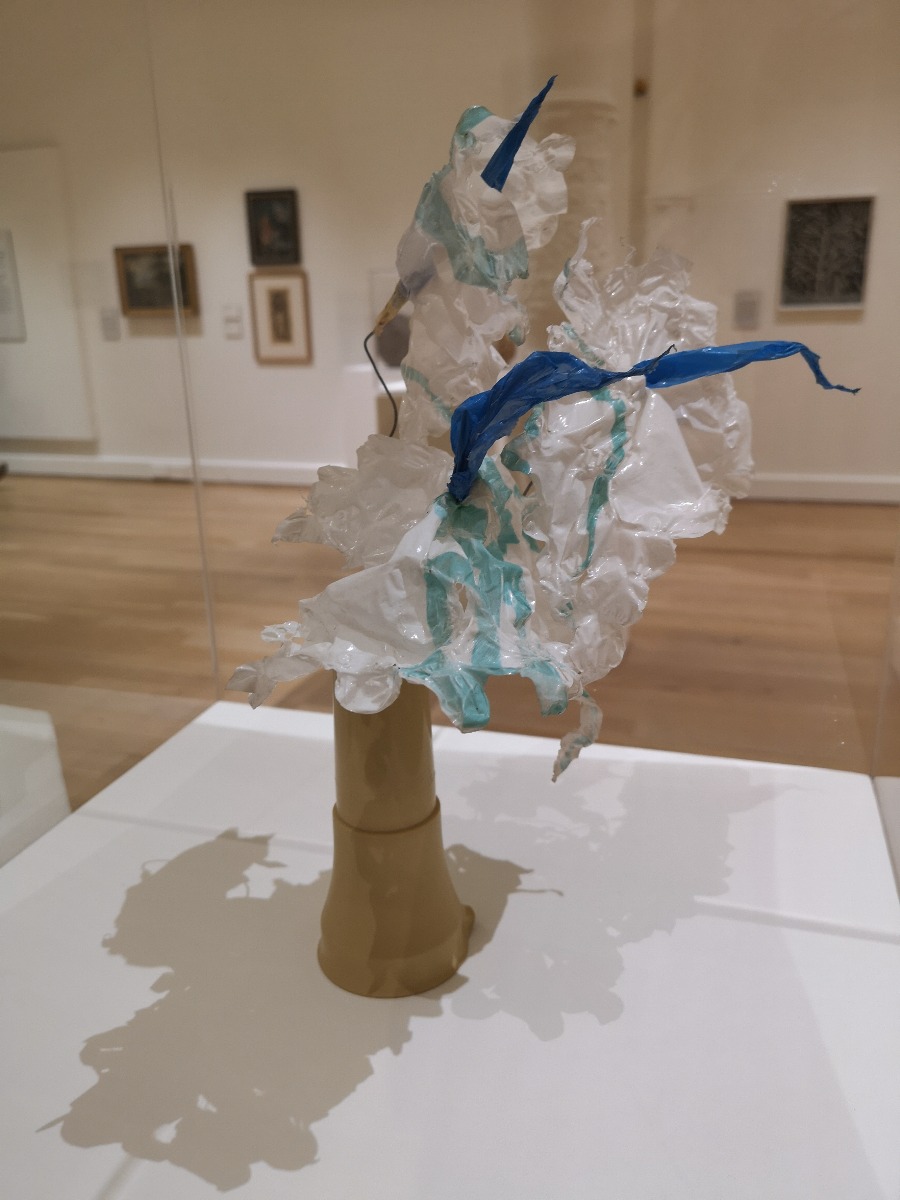
Brian Griffiths has constructed ‘Some Flowers’ from Tupperware, wire and plastic bags; at one level a message about the danger of replacing the living with the manufactured. Yet, the description reminds us that Sten Gustav Thulin, the inventor of the plastic bag, was trying to decrease deforestation through paper bag usage. There is nothing inherently evil in a material; it is how humans manipulate them that causes problems.
I left feeling more prepared for lockdown, reminded of the importance of nature in engaging human creativity and our duty to protect and cherish it. I will have much to reflect upon during my daily walks for the next few weeks.
The exbibition continues until 20th February 2021 once lockdown ends.
Photographs by Debbie Rolls.
https://museumsandgalleries.leeds.gov.uk/events/leeds-art-gallery/natural-encounters/


